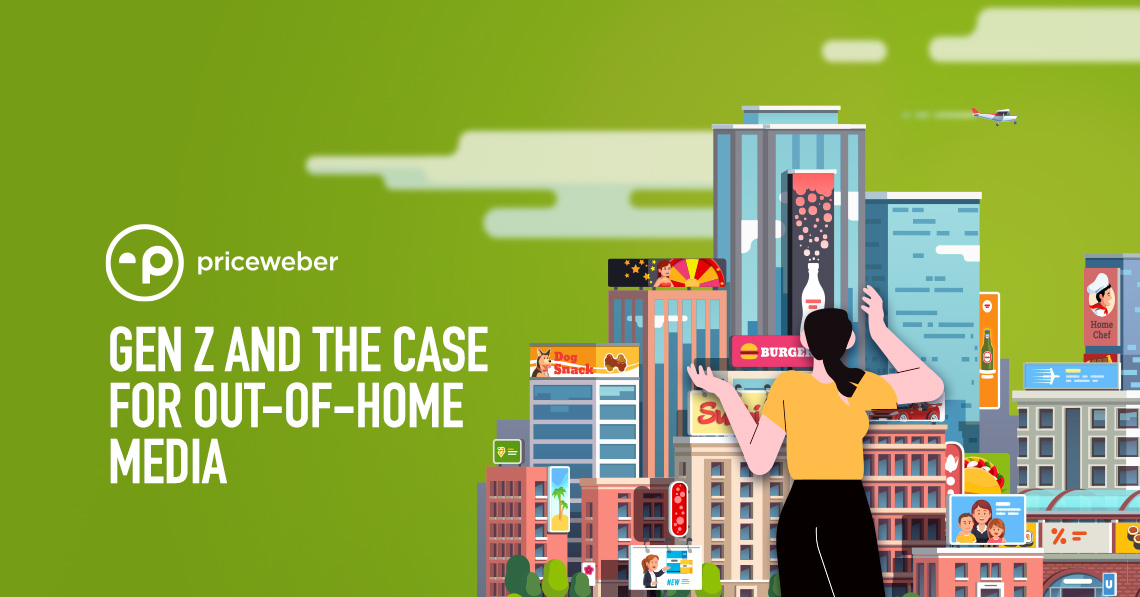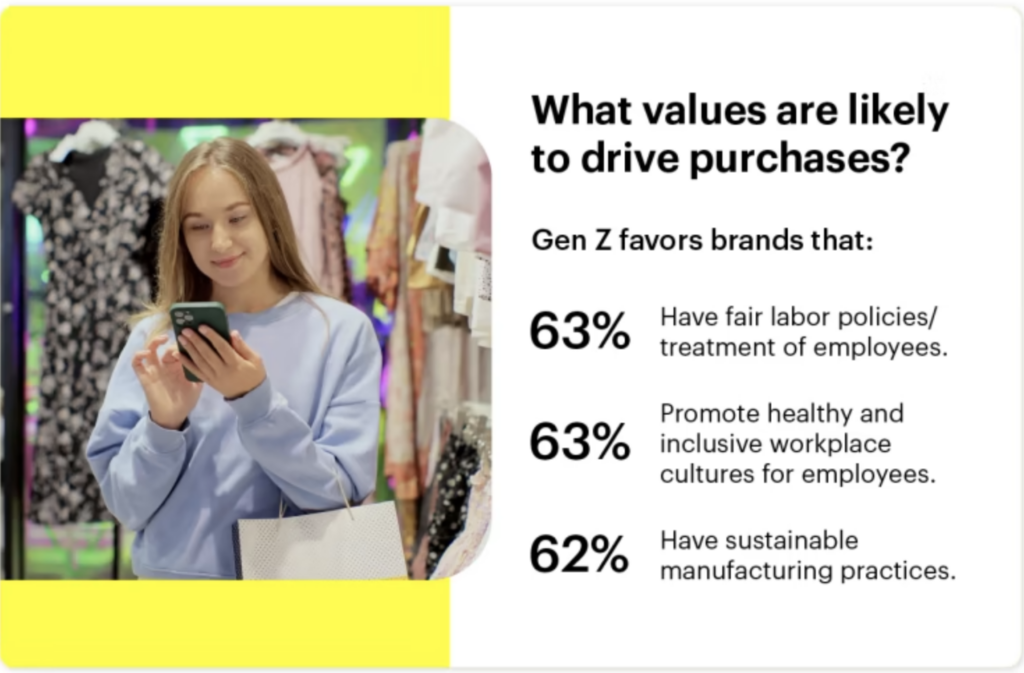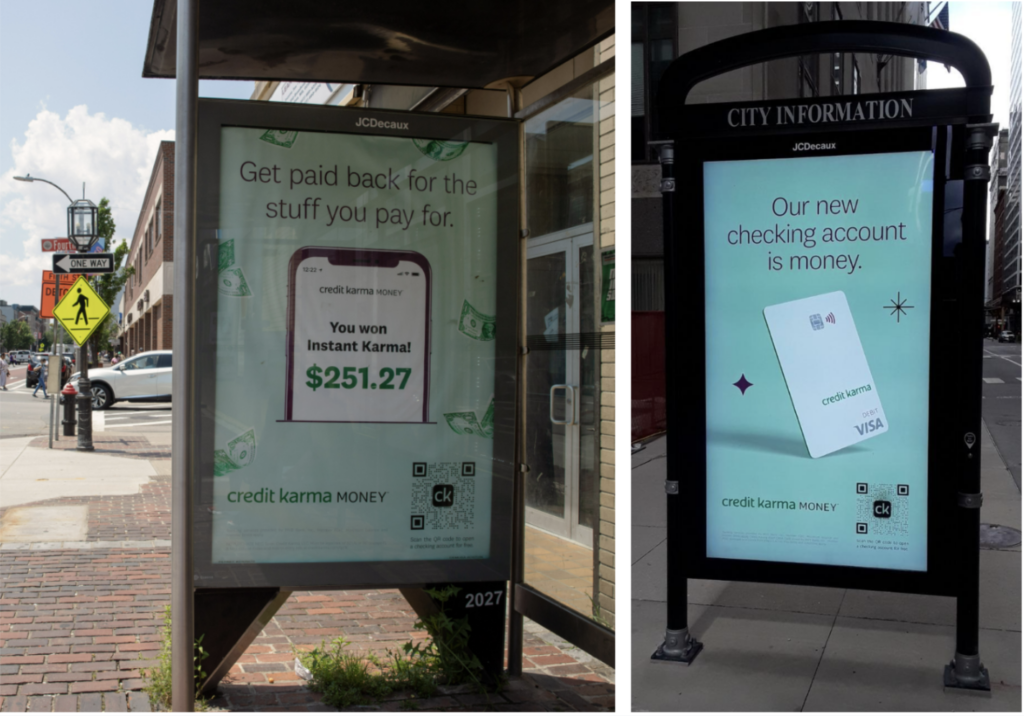When you think of Gen Z (age group 11-26) and media, a litany of words come to mind: social media, influencer, TikTok, Instagram, Snapchat, video games, Netflix, podcast, livestream, etc. But as far back as early 2017, research by Kantar Millward Brown found that 55% of Generation Z respondents view out-of-home (OOH) positively. This is consistent with their view of all traditional media (cinema 53%, magazines 51%) and a whole 20 points higher than any online option (desktop display 32%, search 32%, and mobile display 30%). In 2018, AdAge/UNiDAYS affirmed this when they found “84 percent of Gen Zers surveyed said they pay attention to digital out-of-home ads in familiar media placements such as trains, malls, airports and taxis.
In this edition of “Plain Talk,” we’ll discuss:
- Why Gen Z gravitates toward OOH
- Why Gen Z and millennials are less enthusiastic about online advertising
- What Gen Z looks for from brand creative and how to best address them with OOH creatively
- How QR codes on OOH can deliver engagement and measurable results
Why Gen Z gravitates toward OOH>Why Gen Z gravitates toward OOH
Studies show the Gen Z population is spending more than 10 hours a day on an electronic device, and on average, they use five screens a day! This includes 7.2 hours of video media consumption a day. With 24 hours in a day and them averaging 6:57 minutes of sleep, they’re awake 17.05 hours, and only 7 hours aren’t spent with electronic devices. This means they are on an electronic device almost 60% of the time they’re awake. Additionally, over 40% of their awake time is spent specifically watching videos.
So, for Gen Z, the “real world” is a break from online – the place where they’re bombarded with ads. In their 2022 research in the UK, Bulbshare found, “Armed with ad blockers, volume control and the almighty skip button, (Gen Z consumers) are pulling out all the stops to resist traditional advertising. With the finger of 99% of customers poised and ready to hit skip, and 63% of consumers’ browsers bulwarked with ad blockers, advertising is undergoing a reckoning.”
When Kantar Millward Brown asked Gen Z why they favored OOH, they answered that they find OOH relaxing. Meanwhile, in 2017, MarketingSherpa found that consumers trust OOH more than any online options.
Why Gen Z and millennials are less enthusiastic about online advertising
The same Bulbshare research states, “Attention is currency, and consumers are refusing to pay up. 75% feel bombarded with advertisements throughout their daily lives, with 74% finding themselves irritated by this incursion on their time. And it’s not just a mild disruption, either: 1 in 4 find advertising extremely intrusive, and 1 in 2 believe it is somewhat disruptive. Only 7% voted that they are not in any way distracting or troublesome.”
Gen Z doesn’t want to be sold. They want to be supported by brands.
An October 2022 study found:
Gen Z sports fans are 27% more likely to appreciate brands that sponsor sports-related social content compared to brands that advertise during live sports games on linear TV.
The survey also found that among NBA fans aged 13-34 who had watched a live playoff game the same day they were surveyed, 2 out of 3 could not remember a single ad that played during the game. In addition, 1-in-5 muted the linear TV when ads came on.
So, it’s safe to say that if Gen Z can’t skip the ads, they’re zoning out!
What Gen Z looks for from brands and how to best address them with OOH creatively
Gen Z wants to be entertained. In July 2022, Ipsos reported 81% of (Gen Z consumers) like when brands use humor, but only 28% say brands connect with their comedic sensibilities.
Both Gen Z adults and Gen Z kids also report more than older generations the desire to buy from corporately responsible brands whose values they feel align with their own. A 2022 study showed Gen Z heavily favors brands that promote fair labor practices, inclusivity and sustainability.
Further, Gen Z does not want to be sold. To paraphrase Eric Jones, VP of corporate marketing at WP Engine, from Entrepreneur May ‘21, “Instead of being sold, Gen Z wants to partner with their brands. They want a relationship; they want honesty.”
It is imperative that brands operate from a position of authenticity. Ernst & Young found, “Authenticity is the most important value for Gen Z — even beyond future plans and being rich.” So whichever value you plan to partner up with Gen Z, make certain that it is authentic to your brand’s DNA. And not all Gen Zers are the same – shocking! Helixia does an excellent job breaking Gen Z into five personas (Fashion Foodies, Competitors, Activists, Dedicated Gamers and Entertainment Fanatics), but they all like Drake!
So, brands need to authentically engage Gen Z on an issue they care about. And humor or coolness doesn’t hurt if executed appropriately.
Further, Gen Z views themselves as more artistic than previous generations; 73% of Gen Z believe they need more self-expression to live a happy, healthy life. They want to engage with brands. The National Retail Association, in conjunction with IBM from their 2017 research, states, “To attract this generation and build loyalty, brands must provide opportunities for engagement and co-creation.”
QR codes on OOH deliver engagement and measurable results
QR codes empower us to experience the physical world online. They are just like clicks but can happen anywhere – even in our living rooms. 95% of Americans aged 18-49 own smartphones; surprisingly even 80% of those who are homeless in America have smartphones. In 2022, QR code scanning increased by 433% over 2021. And in the U.S., 73% of consumers have scanned a QR code in the last 30 days. Overall, 92% of U.S. consumers have scanned a QR code for something other than a restaurant menu. As our article from last February states, “COVID-19 hit, and the QR code became the perfect accessory for a world that suddenly didn’t want to touch anything.” QR codes can and are making all media interactive, including the TV screen, the billboard, print ads, the bar signage, and the grocery store shopping carts.
And QR codes are delivering on engagement by doing everything from inviting and offering a simplified way to open a checking account to promoting Black Friday specials to asking people passing by to vote.
Well-placed, well-thought-out QR-coded campaigns are delivering, too, with some having scan rates consistent with online click-thru rates.
Because attention is necessary!
To summarize, Gen Z is online more than they’re offline. And they grew up online, mostly watching pre-recorded videos. As digital natives, they are so inundated with annoying lead gen and other brands’ creative delivering such poor experiences they have become numb to online marketing. 84% of Gen Z consumers now report having lost faith in influencers that are common on social media.
So, OOH can provide a low-pressure, enjoyable way for young people to initiate interaction with brands that represent authentic commonality. And because everyone always has a phone and QR codes are now mainstream, OOH can offer measurable engagement.
Want to talk OOH or general media with our strategic team of problem-solvers? Drop us a note or call us at 502-499-4209. Like what you read today? If you’re not already a subscriber to our Plain Talk newsletter, you can subscribe below.





